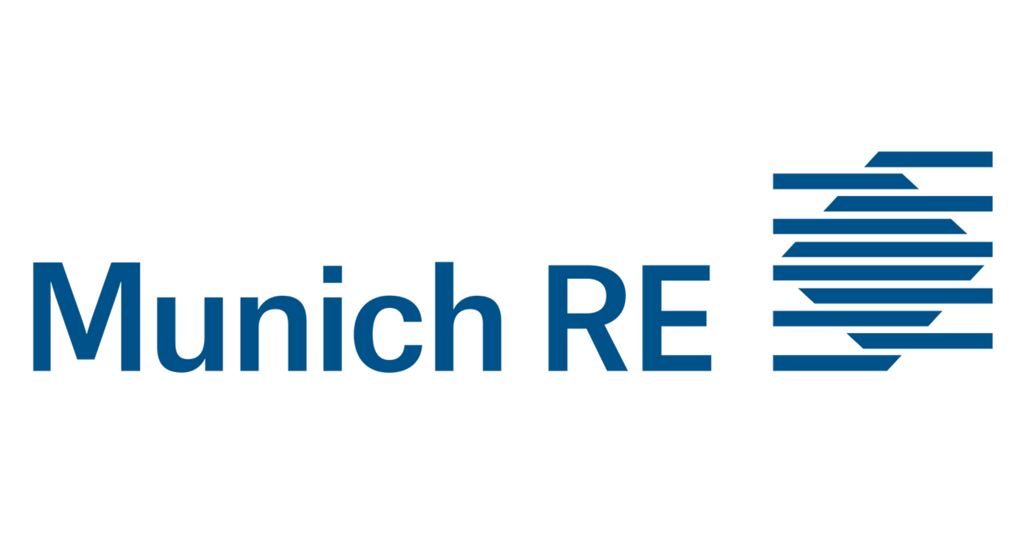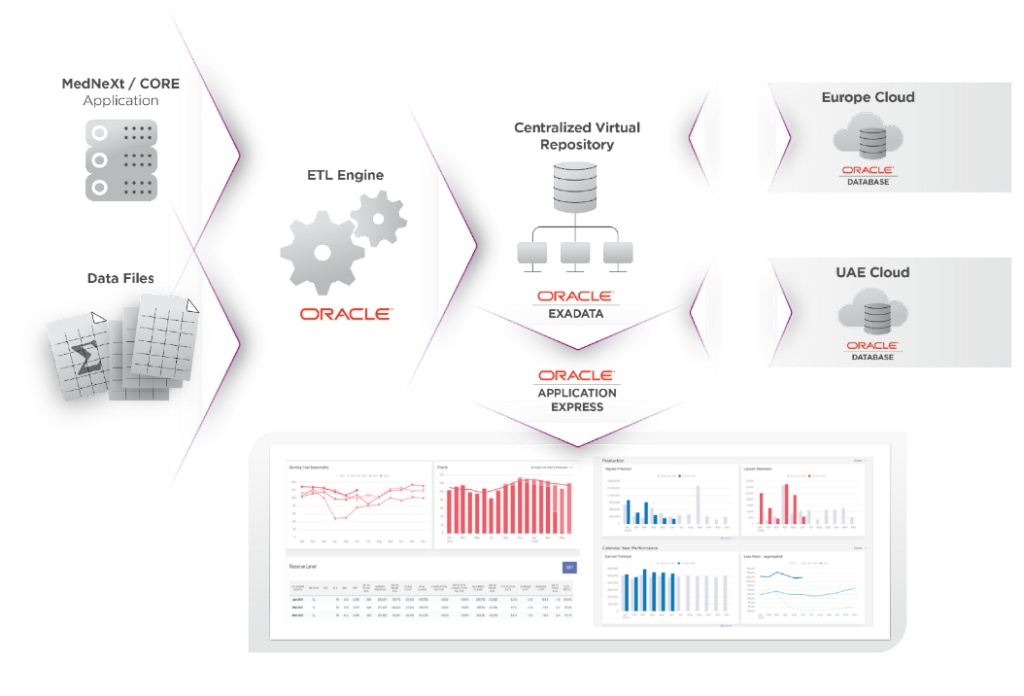A custom low-code solution – developed quicker than any traditionally-made system – can significantly reduce your company’s operating costs and allow you to overcome new challenges. Here’s a story of how we helped a leading global specialist in digital solutions for the health insurance industry to design and develop a scalable low-code SaaS system.
Challenge: reducing license costs and developing a cloud-native SaaS application
Munich Re is the biggest reinsurance company in the world, with over 25 years of experience and a global reach – the organization successfully operates in 19 countries worldwide. Its health-tech division – dubbed Munich Re HealthTech or MRHT – offers advanced digital solutions for partners in the health insurance industry.
One of the products that MRHT offers its health insurance clients is SMAART – a system that underwriters and actuaries use for managing various aspects of insurance policies. When a company buys group insurance for its employees, the policy has to be priced and renewed each year based on the current data and possibly some new factors, especially the number and nature of payments made to the insured party.
This requires a lot of work, and SMAART does all of it. Insurers can use it to automate claims reserving, portfolio monitoring, and pricing, among other things. It’s also a powerful analytical tool, helping insurance companies shape their entire pricing and risk management strategy. It gives them a 360-degree view of their business performance, delivering visibility into portfolio profitability.
This custom-made software product existed for years, but there was room for improvement. Scaling it was difficult, and the licenses required were quite expensive. Also, the system wasn’t very user-friendly, and using it required a lot of time.
The company’s strategy for the future was to offer the solution “as a service” and scale up. The existing system had to be changed considerably to accommodate these plans, and further development would be complicated and expensive. Therefore, creating a new solution was a more optimal option.
Solution: new SMAART system rebuilt in Oracle APEX
MRHT decided that a new system based on a low-code development platform was the best way to achieve their desired result. SMAART was meant to be offered as a SaaS application, so they needed an established, mature technology that would work well in the cloud. They also wanted something that would look as sleek as it operated.
Finally, they’ve had previous experience with Oracle technologies and wanted to reuse large parts of their existing resources, especially the back end of the solution, responsible for risk determination, data collection, and so on. They needed a new front end and a wrapper that would connect the new and old elements of the system. All of this made the Oracle APEX low-code platform the natural choice.
Since they didn’t have the necessary low-code expertise, the company started searching for an external vendor who could help to deliver the solution. MRHT contacted us, Pretius, in August 2018 after a careful review of Pretius’ portfolio and experience with the framework. Shortly afterward, the cooperation between our companies began.
Back then we had some concerns about this project. MRHT was our first international (non-Polish) client, and we didn’t have the experience with remote work that we have today – remember, this was before the Covid-19 pandemic that changed the entire job market. However, we managed to build a great relationship with MRHT. They taught us many things about their industry, clients, and needs, and we devised a unique co-creation model, cooperating with the client on an ongoing basis and shaping the system they wanted together.
Despite our initial concerns, the first version of SMAART was delivered in record time – in just 3-4 months (400 man days). This was possible because of four key things:
- The project was, in essence, a migration. We didn’t need to create everything from scratch and could reuse many critical elements.
- The project started with an in-depth analysis that took around a month and required 3-day workshops in Warsaw.
- Low-code app development uses pre-made, universal modules, graphical user interfaces, features, processes, buttons, drag-and-drop wizards, etc. All of this makes it much faster and more efficient than the traditional software development process.
- The project was created in a co-creation model. We frequently travelled to the client’s office, and their employees visited us in Warsaw. This made learning easier for both parties. On our end, it meant we could learn what we needed to about the insurance business. MRHT’s people, on the other hand, learned everything they needed to maintain the system by themselves. We believe this is a great way to cooperate, and we’ve done it since in many parts of the world.
We’ve developed the new front end, expanded some of our APEX plug-ins to implement complex UI/UX options, and taught some of the client’s employees a few things about APEX development. MRHT was impressed with the provided software, and our cooperation is still ongoing – 4 years and counting.
- Low-code advantages: 5 reasons to consider it for your company in 2023
- 10 low-code myths in 2023 (and how to address them)
Effect: a cost-effective, low-code SaaS application with great functionality
SMAART is a software-as-a-service application provided by MRHT to health insurance companies.
But it’s not just about money. SMAART also helps users save a lot of time. Some activities that required days now take minutes instead. For example, reserve setting and data mapping – previously done in Excel and requiring up to 15 days – now takes around 20 minutes. Clustering policies and steering portfolios can be done in 5 minutes, compared to 2-3 days before. Simulations also take a few minutes at most.
The system is also reliable and doesn’t require all much maintenance – in fact, in 4 years, there were only 64 incidents, and none of them can be considered severe. It also supports Oracle’s sharding technology, offering an easy way to take care of data residency requirements – MRHT can control in which country the data for a specific client will be stored on the servers. And they have done this without writing a single line of code.
It’s not an overstatement to say that MRHT’s clients love SMAART – many of them complement the system and can’t imagine their day-to-day operations without it.
“The solution is secure, scalable, and compatible with most technologies used by MRHT’s clients. It’s also much cheaper to maintain which was an important success criteria factor. Application licensing costs were largely reduced.” – Bilal Ramadan, Chief Delivery Officer at Munich Re HealthTech
The future looks even brighter
Thanks to this cooperation, both of our companies learned a great deal, and we hope to learn even more in the future. MRHT has ambitious roadmap for SMAART including enhancing the workflow (improving the business flow, ETL – Extract, Transform, Load – support), adding machine learning capabilities, and interactive visualization (for easier drill-down).
This project proves that low-code platforms are a great option for creating systems or mobile apps to work in the SaaS business model. Here are some of the benefits:
- Most low-code development platforms are natively integrated with the cloud, which simplifies maintenance and ensures great scalability
- Well-made low-code systems are highly stable and reliable
- You get access to modern technology with a future-proof feature set, sleek drag-and-drop interface, great UX, etc.
- If you choose a platform that’s aligned with your current tech stack, you can reuse some of the licenses, knowledge, and workforce
- Talent acquisition becomes easier because some non-tech employees can be trained in using low-code solutions to become so-called “citizen developers” to take some of the burden off the shoulders of professional developers
- Time-to-market is very short in comparison to traditional software development, and the work on new features also goes fast
Are you considering no-code or low-code application development?
If you’re interested in custom apps made using low-code tools, you’ll find no better partner than Pretius. Our company has a great deal of experience with various low-code and no-code platforms, including Mendix, OutSystems, and Oracle APEX. Our APEX Developers proved they’re worth not only as awesome coders but also seasoned conference speakers and creators behind several well-known APEX plugins. On top of that, we know a lot about the cloud and migrating legacy technologies to newer tech. Write us at hello@pretius.com or use the contact form below – we’ll get back to you in 48 hours.

